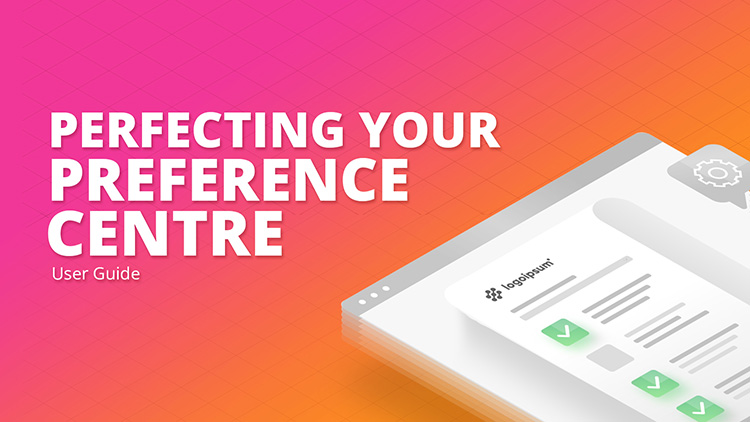Blog
CATEGORY: Planning and perfecting your preference centre
Planning and perfecting your preference centre

What is a preference centre?
An email preference centre is a page that gives your subscribers a choice in the emails they get from you (such as content or frequency) in addition to the option of unsubscribing. This way, subscribers can opt down instead of completely opting out.
Benefits of a preference centre
Reduce unsubscribes
Showcase different email offerings
Personalise subscriber experience
Increase engagement and inbox placement
Data protection
Email preference centres are not the same as unsubscribe pages.
An unsubscribe page confirms an opt-out, might ask for feedback, and could prompt people to re-subscribe. It’s basically all or nothing. This is the experience most brands deliver when people click to unsubscribe from an email because 1) it’s a minimum legal requirement and 2) it’s easier than building out a preference centre.
Here are some examples of preference centres that have included more sophisticated requirements:
Reduce unsubscribes
The most tangible benefit of email preference centres is that they help decrease the number of people unsubscribing from your emails. When subscribers are unhappy with your emails, and the only choice you give them is to unsubscribe from everything, then that’s what they’ll do. But when you offer choices, subscribers are more likely to stay on board—just not at a full-time capacity anymore. And that’s okay.
According to MarketingSherpa research, 49% of people prefer to get emails and choose the frequency themselves versus 24% preferring the brand choosing for them.
In addition to reducing unsubscribes, you’d also lower spam complaints as well as general customer service or social media complaints which can be damaging to your email deliverability and your brand reputation.
Showcase your communications offering
Email preference centres can highlight everything you have to offer, especially if the contact signed up originally for a specific reason only. Subscribers could see an email list or topic they’re interested in but not currently opted in to, and opt in!
This also gives you the opportunity to expand on the benefits of subscribing to your emails so you can convince your subscribers to stay.
Remember: Your preference centre needs to make sense to your audience. Topic names should be understandable to everyone, not just the internal teams that devised the centre layout.
And: Whilst it is important for GDPR for there to be granular consent – make sure that your options reflect what is actually being communicated and keep it as simple as you can – huge, long lists of options can be overwhelming and ultimately can damage the user experience leading them to not opt in to the things they need.
Personalise the subscriber experience
One perk of giving your subscribers options? Their preferences can fuel your segmentation strategies and personalisation efforts. You can focus on what your subscribers actually want which leads to a better subscriber experience. If a subscriber is only interested in news on when their bins are going to be collected, then may not want to hear about local events or opportunities to get involved in the community.
Increase engagement and inbox placement
The level of personalisation that email preference centres gives you means increased email engagement and many other improvements.
About 74% of consumers would find “living profiles” like preference centres valuable if they could be used to curate the experiences, offers, and products they receive. People are fickle creatures and their communication preferences are unlikely to be static and indeed as they become more engaged generally the scope of communications they wish to receive could increase too.
Learn more about your best audience
According to Litmus’ latest State of Email report, email returns $36 for every $1 spent—more than any other marketing channel! This makes your email subscribers like gold. They’re your best audience, and an email preference centre would give you the chance to learn more about them. If you can figure out what makes them tick (and click!), you can attract more people like them.
Profile information
You can also use preference centres to collect additional subscriber profile information such as:
First and last names
Job title
Location
Gender
Birthday
Shoe size
This kind of data gives you even more ways to personalize your subscribers’ experience that simple email preferences may not provide. You can use someone’s birthday to send them a celebratory email or use someone’s shoe size to send them a seasonal sale email that links to only the shoes left in that size.
Solutions
Email marketing healthcheck
We are confident that we can help you, which is why we offer a free healthcheck to identify potential issues with your current programme and free advice on things that could be done to improve it.